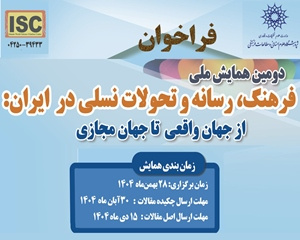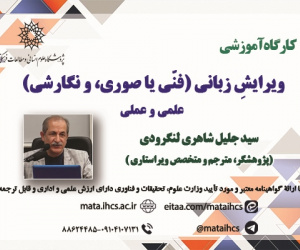بازخوانی انتقادی تفسیر آیه سوم سوره تحریم با تکیه بر تاریخ گذاری قرآن (مقاله علمی وزارت علوم)
درجه علمی: نشریه علمی (وزارت علوم)
آرشیو
چکیده
آیه سوم سوره تحریم خبر از راز رسول خدا (ص) و افشای آن توسط برخی همسران ایشان می دهد که اخبار سبب نزول، افشای آن راز و نوع توطئه را به عنوان یک مسئله، به حسادت زنانه تنزل داده است. کشف این راز و نوع توطئه از این زاویه دارای اهمیتی ویژه است؛ زیرا از یک سو راز افشاشده را به حسادت زنانه کاهش داده و ازسوی دیگر، مفسران اهل تسنن و مکتب شیعه متأثر از این روایات، راز افشاشده را به خلافت ابوبکر و حضرت علی (ع) معطوف دانسته اند. در این مقاله، ابتدا اخبار سبب نزول از منابع و تفاسیر شیعه و اهل سنت ذیل حسادت زنانه و خلافت ابوبکر و حضرت علی (ع) دسته بندی و ارزیابی شده و آنگاه با استفاده از روش تاریخ گذاری سوره های قرآن و خط نزولی سوره تحریم و همجواری میانی آن با سوره های منافقون، نور، احزاب ، فتح و صف، حقیقت توطئه و راز افشاشده در آیه سوم را مربوط به پیروزی قطعی پیامبر (ص) در آینده نزدیک بر مشرکان دانسته است. بنابراین، گذشته از تبیین متفاوتی که از مفهوم راز افشاشده ذیل آیه سوم حاصل شد، روش تاریخ گذاری نقش مهمی در شناخت صحت و سقم روایات اسباب نزول ایفا کرد؛ زیرا تاریخ نزول این سوره به وضوح نشان می دهد که روایات اسباب نزول به غلط ذیل آیه سوم سوره تحریم آورده شده و برآن منطبق گردیده است.A Critical Review of the Interpretation of Verse Three of Surah Al-Tahrim with Emphasis on Quran Chronology
Verse three of Surah Al-Tahrim reveals the secret of the Prophet Muhammad (PBUH) and its disclosure by some of his wives, with traditional accounts attributing the disclosure and the conspiracy to a matter of female jealousy. Understanding the nature of this secret and the associated conspiracy is of special importance, as it has been reduced to an issue of female jealousy on one hand, while on the other hand, both Sunni and Shia commentators have linked the revealed secret to the caliphates of Abu Bakr and Ali (AS), influenced by these narrations. In this article, narrations of the causes of revelation from Shia and Sunni sources, relating to female jealousy and the caliphates of Abu Bakr and Ali (AS), are categorized and evaluated. Then, using the method of Quran chronology and the descending sequence of Surah Al-Tahrim, along with its proximity to Surahs Al-Munafiqun, Al-Nur, Al-Ahzab, Al-Fath, and Al-Saff, it is argued that the truth behind the conspiracy and the disclosed secret in verse three relates to the Prophet’s (PBUH) certain victory over the polytheists in the near future. Therefore, beyond the new interpretation of the disclosed secret under verse three, the method of chronology plays a crucial role in verifying the authenticity of the narrations of the causes of revelation, as the chronology of the surah clearly shows that the narrations of the causes of revelation were mistakenly attributed to verse three of Surah Al-Tahrim and incorrectly applied to it.



